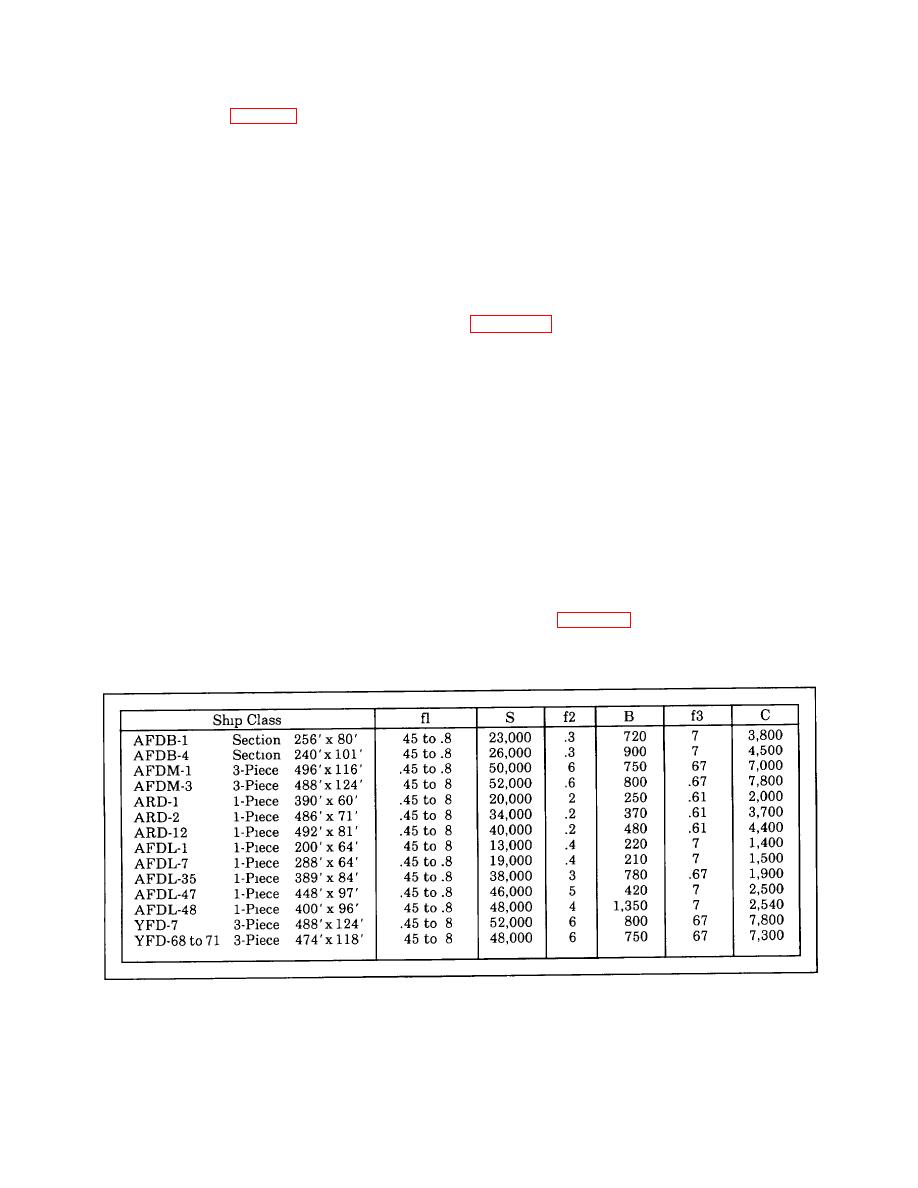
| Tweet |

Custom Search
|
|

|
||
 TB 55-1900-232-10
(Text continued from page G-3 )
G-1.2 ADDITIONAL RESISTANCE DUE TO WAVES . As in the case of smooth water hull resistance curves,
it was found that three curves adequately covered the expected range of weather and tows. Furthermore, the
data are considered qualitative only.
Note that there is no method provided for estimating the effect of other than head seas. Under the more benign
sea conditions, where the tug has total freedom in course-setting, the effect of the waves on the tow and tug is
modest. In more strenuous cases, the tug will have to set a course into the seas for stability purposes as well
as for relief of effects on the hawser. Under the more strenuous conditions, it is unlikely that the tug will be able
to take advantage of following seas.
For the larger ships represented by curves 2 and 3 in Figure G-2, the added resistance is significant at the
higher sea states. However, under these conditions the tug itself may experience difficulty and may simply
have to reduce power to maintain steerageway. Speed over the ground of the tug and tow may well be
sternward in this case and this is perfectly appropriate in the open sea.
G-1.3 WIND RESISTANCE. The prediction of wind resistance is also simplified in this manual. The sea
conditions associated with the most significant winds generally dictate towing into or close to the wind. The
ability to precisely predict the reduction of tow resistance from a Force 10 wind off the quarter is not very
important. Furthermore, in those cases where there is insufficient reach or duration of the strong winds to raise
fully-developed waves, the tug will base operational decisions on actual observations of the towline, not on the
predicted assistance from strong stern winds.
G-2 FLOATING DRYDOCKS
The following method for determining the total tow resistance of non-self-propelled floating drydocks is based
on the now out-of-circulation. Technical Publication NAVDOCKS TP-DM-26, 1 October 1953,Towing Non Self-
Propelled Floating Structures. This procedure, which has been successfully used for many years, is
recommended for estimating tow resistance for these types of craft . Table G-4 contains the various constants
used in the following formulae.
TABLE G-4. Drydock Towing Coefficients.
G-17
|
||
 |
||